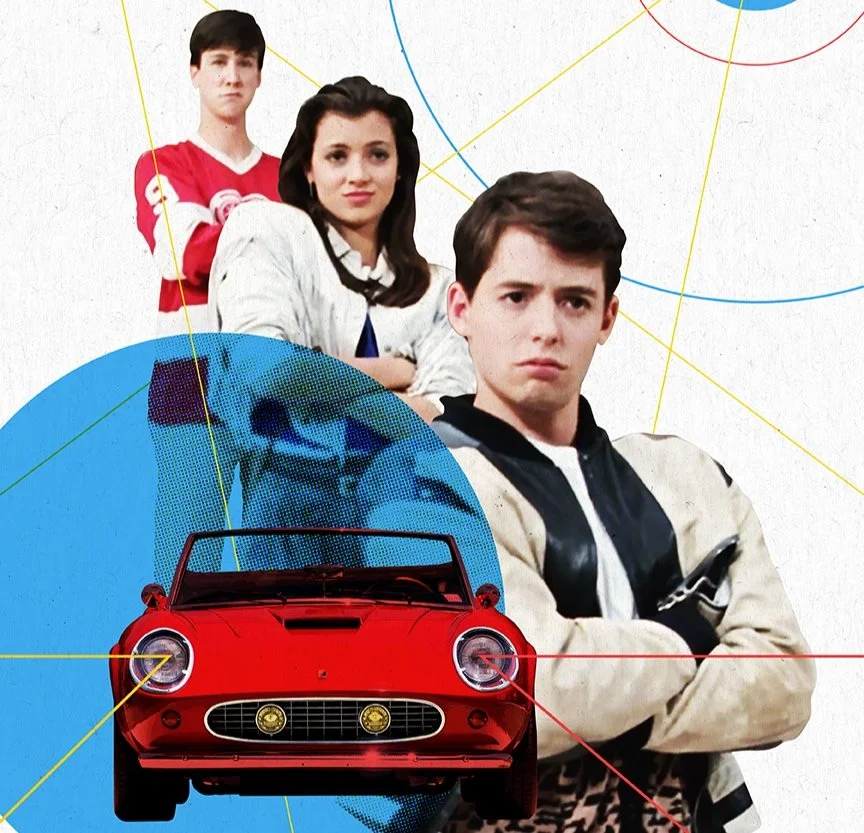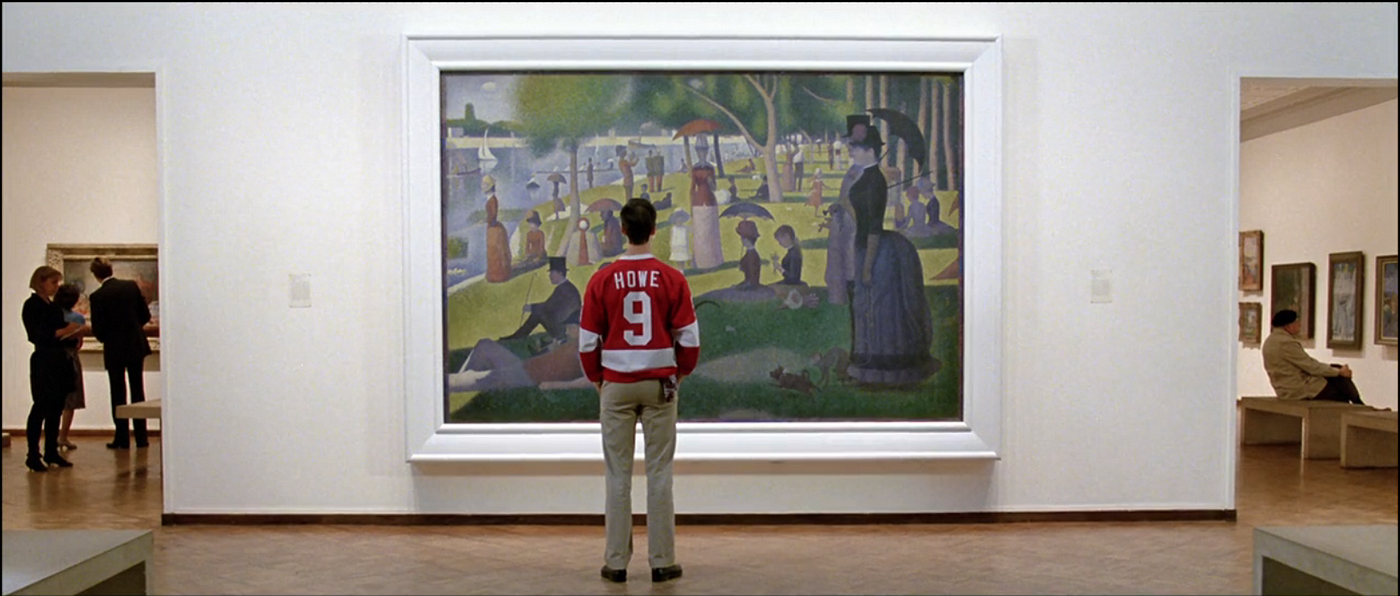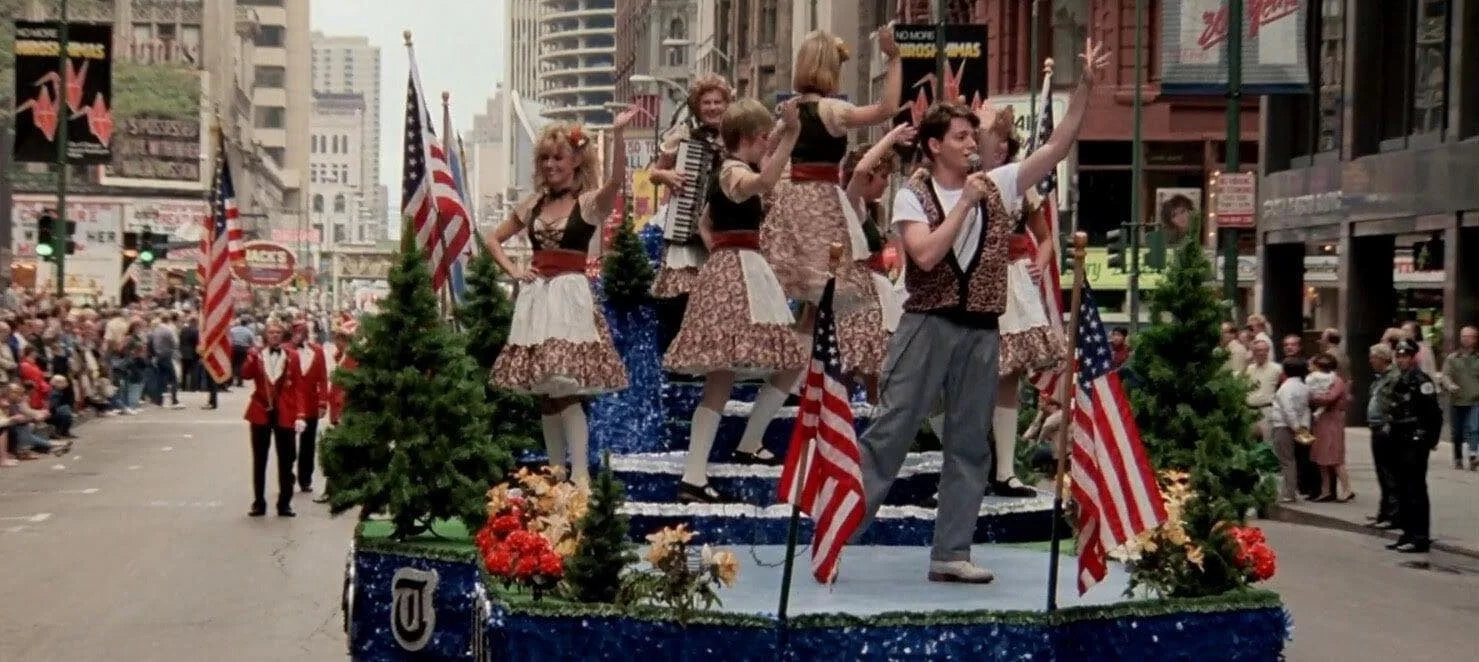FERRIS BUELLER, YOU’RE MY HERO
Life moves pretty fast…
you know the rest
Movies are a shared language, a universal medium. We ask people their favorite movie because it’s more than a question—it’s a bridge. A person’s favorite movie is often deeply personal, tied to memories, feelings, or dreams. By asking, we’re not just seeking a title; we’re inviting them to share a part of themselves, to reveal what moves them, inspires them, or makes them laugh until they cry.
The answer can tell a lot about a person, as it reveals tastes, humor, and even core values, offering insight into their personality without feeling intrusive. Emotionally, it’s an opportunity for connection. Sharing a favorite movie often sparks stories: where they were when they first saw it, who they were with, or why it left a mark on them.
If you asked me what my favorite movie is, I would instantly say Ferris Bueller's Day Off, the iconic 80s classic by John Hughes. It’s one of those movies that I’ve seen so many times that I could quote the entire script at this point–an absolute must-see for anyone who loves feel-good comedies. Matthew Broderick stars as Ferris, a master of skipping school and getting away with it. Planning one final ditch before graduation, Ferris fakes an illness to his parents, "borrows" a 1961 Ferrari GT 250 SWB California, and sets off on an unforgettable day in Chicago with his girlfriend Sloan and his hypochondriac best friend Cameron.
Oh to be Ferris Bueller—where skipping school, stealing Ferraris, and singing on parade floats somehow seem like the ultimate goals in life. This 80s classic is more than just a comedy, it mirrors the complexities of adolescent life—because who wouldn’t relate to being a mix of Ferris’s free-spirited charm and Cameron’s deep existential crisis?
I’ve always loved John Hughes films, as he is notorious for his respectful portrayal of teenagers. Amongst Hughes’s extensive list of coming-of-age films–The Breakfast Club, Pretty In Pink, Sixteen Candles, Weird Science, etc.–FBDO stands out for its distinctiveness, offering an experience that's nearly unmatched by any other movie.
The premise of the movie is straightforward, but Hughes excels as a storyteller, demonstrating exceptional skill in developing both characters and plot. At its heart, FBDO champions the idea that life is too short to let it pass you by, a philosophy Ferris fully embraces with the infamous quote, “I’ll say it once and I’ll say it again: Life moves pretty fast. If you don’t stop to look around once in a while, you could miss it.” Determined to make the most of the day, he drags his hesitant and anxious friend Cameron Frye out of bed to partake in his wild escapades, despite Cameron’s initial reluctance.
On the surface level, I sometimes wish I was Ferris; carefree, adventurous, and a devil-may-care attitude. But deep down, I’m really just Cameron: not behind the wheel of the Ferrari, not singing on the parade float, but tagging along for the ride. In real life, though, we can choose to be Ferris once in a while—not always, because that’d be exhausting. But given the chance to give our inner Camerons a perfect day, wouldn’t we take it?
One of my favorite moments in the entire film supports my way of thinking: the art museum scene. While I am an art nerd and will geek out over the works of art they display in this part of the movie, this perfect moment means more than you realize. The trio visits the Chicago Art Institute, creating a visually stunning scene that masterfully combines film with iconic artwork, such as Edward Hopper's Nighthawks and Jackson Pollock's Greyed Rainbow, among many others. As they wander through the museum, mingling with a school group and playfully admiring the art, one painting, in particular, deeply resonates with Cameron, taking on significant meaning.
Cameron intensely stares at Georges Seurat's pointillism piece A Sunday Afternoon on the Island of La Grande Jatte, with tears in his eyes. Not gonna lie, if I was looking at that piece of artwork I would be doing the same exact thing.
He is fixated on the little girl in the painting, the only figure who is directly looking out at the viewer from the artwork. This connection reflects his feelings of being an outsider and his lifelong struggle with passivity and fear. The painting unlocks a deeper self-awareness in Cameron, mirroring his inner turmoil and his longing to stand out, in contrast to his confident friends, Ferris and Sloane.
Hughes uses the painting to symbolize Cameron's fear of being invisible, as the girl's face disintegrates into pointillist dots the closer he looks, emphasizing his struggle to find his identity. Themes of class and family further connect Cameron to the painting: his father’s materialism and emotional distance parallel Seurat’s critique of societal values. The use of The Smiths' "Please, Please, Let Me Get What I Want" in the background underscores Cameron's yearning for love and validation, particularly by his parents, adding emotional depth to this pivotal moment in the film.
Honestly, I see a lot of myself in Cameron. He’s so stuck in his head, feeling like he doesn’t belong, like he’s never good enough or never truly seen. I’ve spent too much time blending in or second-guessing myself, but I’ve realized that, like Cameron, my experiences and even my struggles shape me as a person. Just like he starts to see his worth outside of everyone else’s expectations, I’m learning to embrace who I am and use my perspective to create something meaningful. That’s where I think my real strength is—owning what makes me unique.
Cameron never expected the day to be anything more than a lighthearted, carefree adventure, and in a way, that painting serves as the first real hint that Cameron is more complex than the other characters in the film.
While that moment with the painting gave me a glimpse into the deeper complexity of the characters as well as myself, the film also offers lighter, more carefree moments that were actually unscripted. One of those moments is the parade scene, which, to me, perfectly captures a sense of pure joy and spontaneity.
The scene was filmed during Chicago’s Von Steuben Day Parade, but what makes it even more iconic is that the cast and crew snuck their own float into the parade without permission. Hughes wanted the scene to feel completely natural, so he kept most of the genuine reactions from the crowd in the movie. I love the fact that the 10,000 extras were actually real parade-goers, caught off guard by the impromptu performance. Matthew Broderick improvised much of his dance routine to The Beatles’ "Twist and Shout," and the spontaneous energy of the moment, including the crowd’s lively participation, made the scene unforgettable. I still get FOMO every time I watch it.
It’s amazing to think that what came across as pure, unscripted fun was actually a bold, behind-the-scenes move that turned into one of the most memorable moments of the film.
Ferris Bueller's Day Off is more than just a movie I love; it’s a mirror showing both the carefree and introspective sides of who I am. After all, Ferris’s philosophy is hard to ignore; life does move pretty fast. And yet, there's wisdom in taking a moment to reflect, to see ourselves for who we truly are, just as Cameron does in that art museum.
I may not be able to channel Ferris every day—let’s be real, I’ve got enough on my plate without skipping school to drive a Ferrari—but I can certainly learn from his ability to find joy in the present moment. And, like Cameron, I’ll continue my own journey of self-acceptance, embracing the complexities of my inner world and learning to navigate life with a little more confidence and a lot more humor. As Ferris himself wisely puts it, "The question isn’t, 'What are we going to do?' The question is, 'What aren’t we going to do?'" We’re always learning, always evolving, and there’s always a new adventure on the horizon—if we’re brave enough to take it.



